History of Delhi
History of Delhi
Historical Region of North India
Delhi
LocationDelhiState established:736 AD
LanguageKhariboli, Hindi, Urdu, Punjabi,EnglishDynastiesTomaras-Chauhans (736-1192)
Mamluk (1206–1289)
Khilji (1290–1320)
Tughlaqs (1320–1413)
Sayyids (1414–51)
Lodis (1451–1526)
Mughals (1526–1540)
Suris(1540-1553)
Hindu-Hemu(1553–56)
Mughals(1556-1857)
British (1857–1947)
Independence (1947–Present)
The Indian capital city of Delhi has a long history, and has been an important political centre of India as the capital of several empires. Much of Delhi's ancient history finds no record and this may be regarded as a lost period of its history. Extensive coverage of Delhi's history begins with the onset of theDelhi Sultanate in the 12th century. Since then, Delhi has been the centre of a succession of mighty empires and powerful kingdoms, making Delhi one of the longest serving Capitals and one of the oldest inhabited cities in the world.[1][2] It is considered to be a city built, destroyed and rebuilt several times, as outsiders who successfully invaded the Indian Subcontinentwould ransack the existing capital city in Delhi, and those who came to conquer and stay would be so impressed by the city's strategic location as to make it their capital and rebuild it in their own way.[3][4] The core of Delhi's tangible heritage is Hindu, Islamic (spanning over seven centuries of Islamic rule over the city) with expansive British-era architecture in Lutyens' Delhi dating to theBritish rule in India.
Significant prehistoric sites in Delhi include Anangpur (in the Badarpur region), as well asHarappan excavations near Narela and Nand Nagari.[5]
References to Delhi's history in ancient literature are based on myths and legends. According to the Hindu epic Mahabharata, a city called Indraprastha, “City of the God Indra”, was the capital of the Pandavas. There is a strong belief that Purana Qila was built over the site of ancient Indraprastha. Northern Black Polished Ware (c700-200 BC) have been excavated at the site, and pieces of Painted Grey Ware were found on the surface, suggesting an even older settlement, possibly going back to ca. 1000 B.C.[5]
In 1966, an inscription of the Mauryan Emperor Ashoka (273-236 BC) was discovered near Srinivaspur. Two sandstone pillars inscribed with the edicts of Ashoka were brought to by Firuz Shah Tughluq in the 14th century. The famous Iron pillar near theQutub Minar was commissioned by the emperor Kumara Gupta I of the Gupta dynasty(320-540) and transplanted to Delhi during the 10th century.
Cities of DelhiEdit
Historic map of Shahjahanabad (now known as Old Delhi), in 1863
It is popularly said that Delhi was the site for a total of seven different cities between 3000 B.C. and the 17th century A.D., although taking smaller towns and strongholds into account, as many as 15 settlements can be identified. All the earlier locations of Delhi fall within an area commonly called the 'Delhi Triangle,' bounded on the south and the west by the Aravalli Range, known as the Delhi Ridge, and to the east by the Yamuna River.[6][7]
Notable settlements to have been established in the region include:[6][7]
Indraprastha, supposedly built by thePandavas.Surajkund (Anangpur), Tomar city dating from the 9th or 10th century, where a large masonry tank can be found.Lalkot, built ca. 1052 A.D. by the Tomararuler, Anangpal. In ca. 1180 A.D. Prithviraj Chauhan extended and fortified it as a defence against Muslim invaders; the city then became known as Qila Rai Pithora. This area, now called as Mehrauli, was also the seat of the Mamluk (Slave) dynasty.Siri, first established as a camp for protection against invading Mongols byAlauddin Khilji, and fortified in about ca. 1303 A.D.Tughluqabad, built by Ghiyasuddin Tughluqin ca. 1320 A.D. A subsidiary fort Adilabadwas built by his son Muhammad bin Tughlaqin ca. 1325 A.D.Jahanpanah, Refuge of the World, name given to the area enclosed by walling-in of the suburbs between Qila Rai Pithora and Siri, built by Muhammad bin Tughluq in ca. 1325 A.D.Ferozabad, built by Firuz Shah Tughluq in ca. 1354 A.D.; all that remains is the palace, known as Feroz Shah Kotla. Feroz Shah’s building activity indicates that the suburbs were still occupied; major mosques were built inside Jahanpanah (Khirki and Begumpur) andNizamuddin[disambiguation needed]; and the area around Khilji reservoir Hauz Khas was developed.Dinpanah built by Humayun and Shergarhbuilt by Sher Shah Suri, both in the area near the speculated site of the legendaryIndraprastha (1538–1545).Shahjahanabad, the walled city built by Shah Jahan from 1638 to 1649, containing the Lal Qila and the Chandni Chowk. It was the capital of the Mughal Empire during Shah Jahan's reign. It is presently referred to as "Old Delhi".Lutyens' Delhi or New Delhi, the city built by the British on the south-west, declared Capital on 12 December 1911. On 12 December 2011 New Delhi celebrated 100 years of serving as India's National Capital.[8]
Early Political History of Delhi, 1060-1947
Modern Delhi, referred to as 'Dilli' locally, derived from its historical name Dhili, is an amalgam all of the above. Officially, however, only seven of the above-mentioned settlements are recognised.[9] as historical cites with distinct identities and indigenous heritage: Qila Rai Pithora, Mehrauli, Siri,Tughlaqabad, Ferozabad, Dinpanah andShahjahanabad.
The rest are not officially identified as Cities of Delhi because of some specific reasons.
Indraprastha, the legendary Ancient City is believed to have been established 5000 years ago (c. 2800 BC), as per the ancient Indian text- the Mahabharata. Though very much a part of India's very Ancient history, it lacks any tangible evidence to say without doubt that it existed. Archaeological evidence exists, but in such scarcity as be inconclusive. As acknowledged by British historian Michael Wood in his BBC documentary The Story of India,[10] the excavated ceramic pottery from the site of today's Purana Qila in Delhi and the excavated layers of the ancient city seem to match what the verses of the Mahabharataindicate. More possible evidence in its favour is the existence of a village named Indraprastha very close to the Purana Qilathat was destroyed by the British during the construction of Lutyens' Delhi.[11]Jahanpanah is not considered as a City of Delhi because it is very much in ruins and too diffused now to be considered a distinct city. Moreover, sections of the city still standing are now counted in Siri or Mehrauli.Lodi Complex is not counted as a distinct city because their architectures are too few to be counted as a whole city. The Sayyid and Lodhi dynasties that followed the Tughlak dynasty were far more concerned with restoring stability than patronisation of arts or architecture. Tombs erected in the honour of the rulers are the only monuments of these times and these are scattered all over currentSouth and Central Delhis.[12]New Delhi, the Capital city of modern India is also not counted as a City of Delhi because the structures of those times are still in use as government buildings. So there seems no such thing as "history" about it.
Early historyEdit
The ancient Yogmaya Temple, claimed to be one of the five temples of Mahabharata days in Delhi.
The iron pillar of Delhi, is said to have been fashioned at the time ofChandragupta Vikramaditya (375–413) of the Gupta Empire.[13][14]
According to Indian folklore, Delhi was the site of the magnificent and opulent Indraprastha, capital of the Pandavas in the Indian epicMahabharata, founded around 3500 BC. It was, one of the five prasthas or `plains', which included Sonepat, Panipat, Tilpat (near Faridabad), and Baghpat.[15] 16th-century, Persian historian, Firishta, recorded a tradition that Delhi or Dilli was founded by a Raja Dhilu before the Yavana (Greek) invasions. However, it should be noted that the kings then referred to the initial Muslim invaders as Yavanas.[15]
Hindu texts state that the city of Delhi used to be referred to in Sanskrit as Hathinapur, which means "elephant-city". The name Delhi may be derived from the word 'Dhillika', though there are other theories. According to Satyarth Prakash (1874) of Swami Dayanand, Raja Dhilu (King Dihlu) founded ancient Delhi in 800 BC, however it is not supported by any older texts[16] It was the name of the firstmedieval township of Delhi, located on the southwestern border of the present Delhi, inMehrauli. This was the first in the series of seven medieval cities. It is also known as Yoginipura, that is, the fortress of the yoginis (female divinities). It gained importance during the time of Ananga Pala Tomar. In the 12th century, the city was included in thedominions of Prithviraj Chauhan.
Pasanaha Chariu of Vibudh Shridhar (VS1189-1230) an Apabhramsha writer, provides the first reference to the legend of the origin of the name Dhilli for Delhi.[17]
हरियाणए देसे असंखगाम, गामियण जणि अणवरथ काम|
परचक्क विहट्टणु सिरिसंघट्टणु, जो सुरव इणा परिगणियं|
रिउ रुहिरावट्टणु बिउलु पवट्टणु, ढिल्ली नामेण जि भणियं|
Translation: There are countless villages inHaryana country. The villagers there work hard. They don't accept domination of others, and are experts in making the blood of their enemies flow. Indra himself praises this country. The capital of this country is Dhilli.
जहिं असिवर तोडिय रिउ कवालु, णरणाहु पसिद्धउ अणंगवालु ||
वलभर कम्पाविउ णायरायु, माणिणियण मणसंजनीय ||
Translation: The ruler Anangapal is famous, he can slay his enemies with his sword. The weight (of the Iron pillar) caused the Nagaraj to shake.
A VS 1383 inscription in Delhi Museumconfirms the founding of Delhi by the Tomars:
देशोऽस्ति हरियानाख्यो पॄथिव्यां स्वर्गसन्निभः |
ढिल्लिकाख्या पुरी तत्र तोमरैरस्ति निर्मिता ||
Prithviraj Raso also confirms the founding by the Tomars and the legend of the loose nail:
हुं गड्डि गयौ किल्ली सज्जीव हल्लाय करी ढिल्ली सईव |
फिरि व्यास कहै सुनि अनंगराइ भवितव्य बात मेटी न जाइ ||
8th century to 16th centuryEdit
See also: Delhi Sultanate
The bastion of Lal Kot fort, Mehrauli, Delhi, built by Tomara, a.k.a. TanwarRajput ruler, Anangpal in c. AD 736.
The Qutub Minar is the world's tallest brick minaret at 72.5 metres, built by Qutb-ud-din Aibakof Turkic Slave dynasty in 1192.
The Tomar dynasty founded Lal Kot in 736. The Prithviraj Raso names the TomarAnangpal as the founder of Lal Kot, whose name is inscribed on Iron Pillar of Delhi atQutb complex, ascribed to Chandra orChandragupta II.[18]
The Chauhan kings of Ajmer conquered Lal Kot in 1180 and renamed it Qila Rai Pithora.
Museum and remnants of the walls at Qila Rai Pithora, the first city of Delhi, founded during the 10th century by Prithviraj Chauhan
The Chauhan king Prithviraj III was defeated in 1192 by Muhammad Ghori. AnangpalTomar, who, according to historian Augustus Hoernle, was a Rajput [19] ruler of Delhi, often described as the founder of Delhi, built the citadel some 10 kilometres from Suraj Kundaround 731.
From 1206, Delhi became the capital of theDelhi Sultanate under the Slave Dynasty. The first Sultan of Delhi, Qutb-ud-din Aybak, was a former slave who rose through the ranks to become a general, a governor and then Sultan of Delhi. Qutb-ud-din started the construction of the Qutub Minar, a recognisable symbol of Delhi, to commemorate his victory but died before its completion. In the Qutb complex he also constructed the Quwwat-al-Islam (might of Islam), which is the earliest extant mosque in India. He was said to have destroyed twenty-seven Jain temples initially housed in the Qutb complex and pillaged exquisitely carved pillars and building material from their debris for this mosque, many of which can still be seen.[20] After the end of the Slave dynasty, a succession of Turkic Central Asian and Afghan dynasties, the Khilji dynasty, theTughluq dynasty, the Sayyid dynasty and theLodi dynasty held power in the late medieval period and built a sequence of forts and townships in Delhi.[21]
In 1398, Timur Lang invaded India on the pretext that the Muslim sultans of Delhi were too tolerant of their Hindu subjects. After defeating the armies of Nasiruddin Mahmud of Tughlaq dynasty, on 15 December 1398, Timur entered Delhi on 18 December 1398, and the city was sacked, destroyed, and left in ruins, and over 100,000 war prisoners were killed as well.[22][23] In 1526, following the First Battle of Panipat, Zahiruddin Babur, the former ruler of Fergana, defeated the last Afghan Lodi sultan and founded the Mughaldynasty which ruled from Delhi, Agra andLahore.
16th century to 19th centuryEdit
The India Gate commemorates the 90,000 Indian soldiers who died in the Afghan Wars and World War I.
Hemu, Hem Chandra Vikramaditya, the Hindu emperor of North India who resisted Mughals in the 16th century.
Jama Masjid built by Shah Jahan, 1656
In the mid-16th century there was an interruption in the Mughal rule of India as Sher Shah Suri defeated Babur's son Humayun and forced him to flee to Persia. Sher Shah Suri built the sixth city of Delhi, as well as the old fort known as Purana Qila, even though this city was settled since the ancient era. After Sher Shah Suri’s death in 1545, his son Islam Shah took the reins of north India from Delhi. Islam Shah ruled from Delhi till 1553 when Hindu king Hem Chandra Vikramaditya, also called Hemu, became the Prime Minister and Chief of Army of Adil Shah. Hem Chandra fought and won 22 battles in all against rebels and twice against Akbar's army in Agra and Delhi, without losing any. After defeating Akbar's army on 7 October 1556 at Tughlakabad fort area in Battle of Delhi (1556), Hemu acceded to Delhi throne and established Hindu Raj in North India for a brief period, and was bestowed with the title 'Vikramaditya', at his coronation in Purana Quila, Delhi.
The third and greatest Mughal emperor,Akbar, moved the capital to Agra, resulting in a decline in the fortunes of Delhi. In the mid-17th century, the Mughal Emperor Shah Jahan(1628–1658) built the city that sometimes bears his name Shahjahanabad, the seventh city of Delhi that is more commonly known as the old city or old Delhi. This city contains a number of significant architectural features, including the Red Fort (Lal Qila) and the Jama Masjid. The old city served as the capital of the later Mughal Empire from 1638 onwards, when Shah Jahan transferred the capital back from Agra. Aurangzeb (1658–1707) crowned himself as emperor in Delhi in 1658 at theShalimar garden ('Aizzabad-Bagh) with a second coronation in 1659. After 1680, the Mughal Empire's influence declined rapidly as the Hindu Maratha Empire rose to prominence.[24]
In 1737, Maratha forces sacked Delhi, following their victory against the Mughals in the First Battle of Delhi. In 1739, the Mughal Empire lost the huge Battle of Karnal in less than three hours against the numerically outnumbered but military superior Persian army led by Nader Shah of Persia during hisinvasion after which he completely sacked and looted Delhi, the Mughal capital, carrying away immense wealth including the Peacock Throne, the Daria-i-Noor, and Koh-i-Noor. The Mughals, severely further weakened, would never overcome this crushing defeat and humiliation which would also let the way open for more invaders to come, including eventually the British.[25][26][27] Nader eventually agreed to leave the city and India after forcing the Mughal emperor Muhammad Shah I to beg him for mercy and granting him the keys of the city and the royal treasury.[28]A treaty signed in 1752 made Marathas the protector of the Mughal throne at Delhi.[29] In January 1757, Abdali invaded Delhi. He returned to Afghanistan in April 1757 giving the control of Delhi to Najib-ud-Daula. However, Marathas occupied Delhi after defeating Najib in a siege of the city. In 1761, the Marathas lost Delhi as a consequence of the third battle of Panipat, the city was again raided by Abdali.
In early 1771, ten years after the collapse of Maratha supremacy in north India in the Third Battle of Panipat, Marathas under Mahadji Shinde recaptured Delhi and restored the Mughal king Shah Alam II as a titular head to the throne in 1772.
In 1803, during the Second Anglo-Maratha War, the forces of British East India Companydefeated the Maratha forces in the Battle of Delhi, ending the Maratha rule over the city.[30]As a result, Delhi came under the control ofBritish East India Company. Between 1836 and 1858, Delhi was a part of what then known as the North-Western Provinces.
Delhi passed into the direct control of British Government in 1857 after the Indian Rebellion of 1857. The city received significant damage during the 1857 siege. Afterwards, the last titular Mughal Emperor Bahadur Shah Zafar IIwas exiled to Rangoon and the remaining Mughal territories were annexed as a part ofBritish India.
Delhi today
The Raj Ghat, where Mahatma Gandhi was cremated.
Calcutta was declared the capital of British India but in 1911 at the Delhi Durbar of 1911, held at the Coronation Park, King George Vannounced the shifting of the capital back to Delhi. Parts of the old city were New Delhi, a monumental new quarter of the city designed by the British architect Edwin Lutyens to house the government buildings was inaugurated in 1931 after its construction was delayed due to World War I.[31] New Delhi was officially declared as the seat of theGovernment of India after independence in 1949. During the Partition of India thousands of Hindu and Sikh refugees from West Punjabmigrated to Delhi, and subsequently settled in North and West Delhi areas, while Hindus from East Pakistan, settled in the late 1960s at EPDP Colony (EPDP: East Pakistan Displaced Persons) in South Delhi, later named Chittaranjan Park in the 1980s.
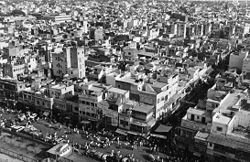



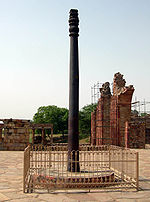
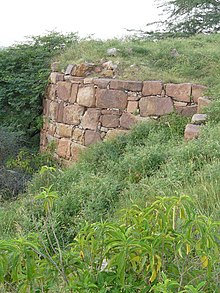
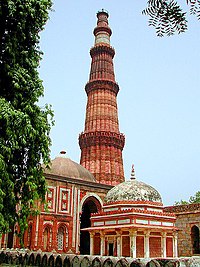


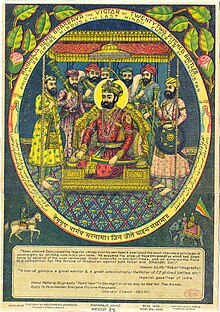









कोई टिप्पणी नहीं:
एक टिप्पणी भेजें